Considering the architects who have left a stigma in contemporary architecture, Frank Gehry pops up to mind automatically. The geometric abstraction of his buildings makes his work recognizable worldwide. His success made him a celebrity, a star architect, known for his ingeniousness, marketing leadership, even some scandals, and failures. “Context is the whole thing,” says Goldberger, who has been following his career since his early years. (Budds D., 2015).
So, what is the background story, the philosophy of this engaging personality? What are the elements that formed the architect Frank Gehry?
9 things you didn’t know about Frank Gehry
1.His real name is Frank Owen Goldberg
Although many writers repeat this misinformation in articles and books about him, he wasn’t named Ephraim Goldberg. Ephraim was the Hebrew name his grandfather gave him but was never used by his family. (Reinhart A., 2010) He changed his surname to Gehry after he graduated from architecture school to preclude anti – Semitism.
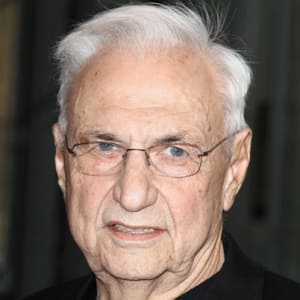
2. There is an ichthyological inspiration in his early designs
As a Jewish kid, Frank Gehry grew up in a house where there were always live carp in the bathtub for Sabbath suppers. (Reinhart A., 2010) In spite of the urban legend surrounding this story, his fish-shaped figures have not occurred from this childhood experience. He defines their origin in a speech he gave in the 1980s, criticizing postmodernism and its attachment to the past, the existence of fish before the human being. What he was seeking in these designs were the feeling of movement and the undulating surfaces.
3. Los Angeles has a great impact on his work
L.A. is a city of mobility, constant movement, and ephemerality. Although Gehry was born in Toronto in 1929, he spent most of his life there and got influenced by its character and rhythms. “Gehry’s architecture starts out by accepting L.A. for what it is”: the lack of typology, the temporary nature. He has a unique way of integrating into the city; he will respect the procedure, but never a given environment or context. (Moneo R., 2004) His buildings are the landmark, not a mild intervention.
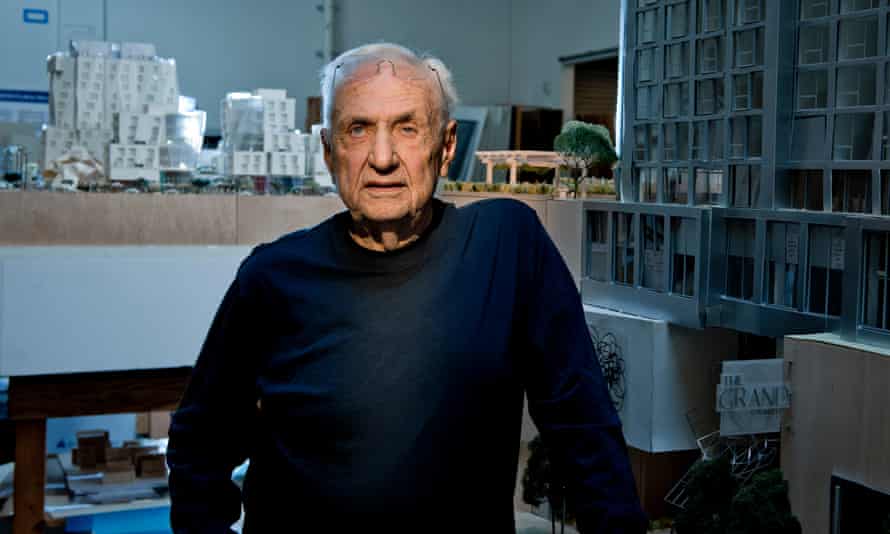
Frank Gehry photographed at his Los Angeles offices. Photograph: Barry J Holmes/The Observer
4. His buildings are defined by an absence of interest in composition
“What I like best is breaking down the project into as many separate parts as possible,” says the deconstructivist architect. For him, the form is not something closed and perfect; he is seeking the evolution of his preliminary idea into the building process, which also allows the client more involvement in the final result. He is a free spirit builder who believes that a fresh look at construction and materials can create a new architecture. (Moneo R., 2004)
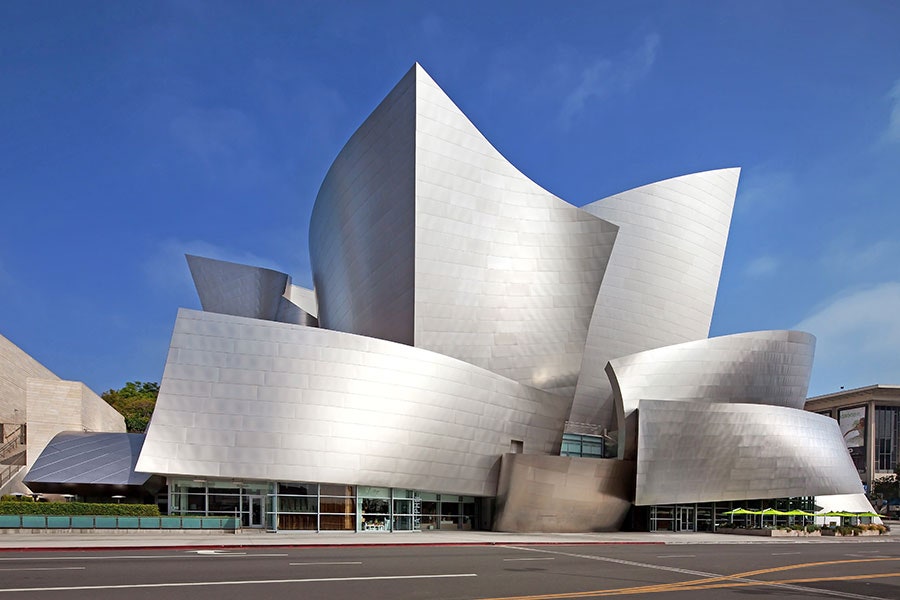
Photo: JRC/Alamy
5. Gehry ignores the traditional representation of the architecture
Floor plans, sections, and elevations are his kryptonite. Once he creates the basic masses in sketches – scribbles, as he calls them – he is no longer interested in the concept of the designing process. He believes that this is a trap meant to cage the architect between the original idea and the reality of construction. However, model making is essential to his experiments with volumes and shapes, and along with the computer technology he has been developing to solve structural problems, he accomplished the impossible: to turn an abstract sketch into a building. (Keskeys P., 2016)
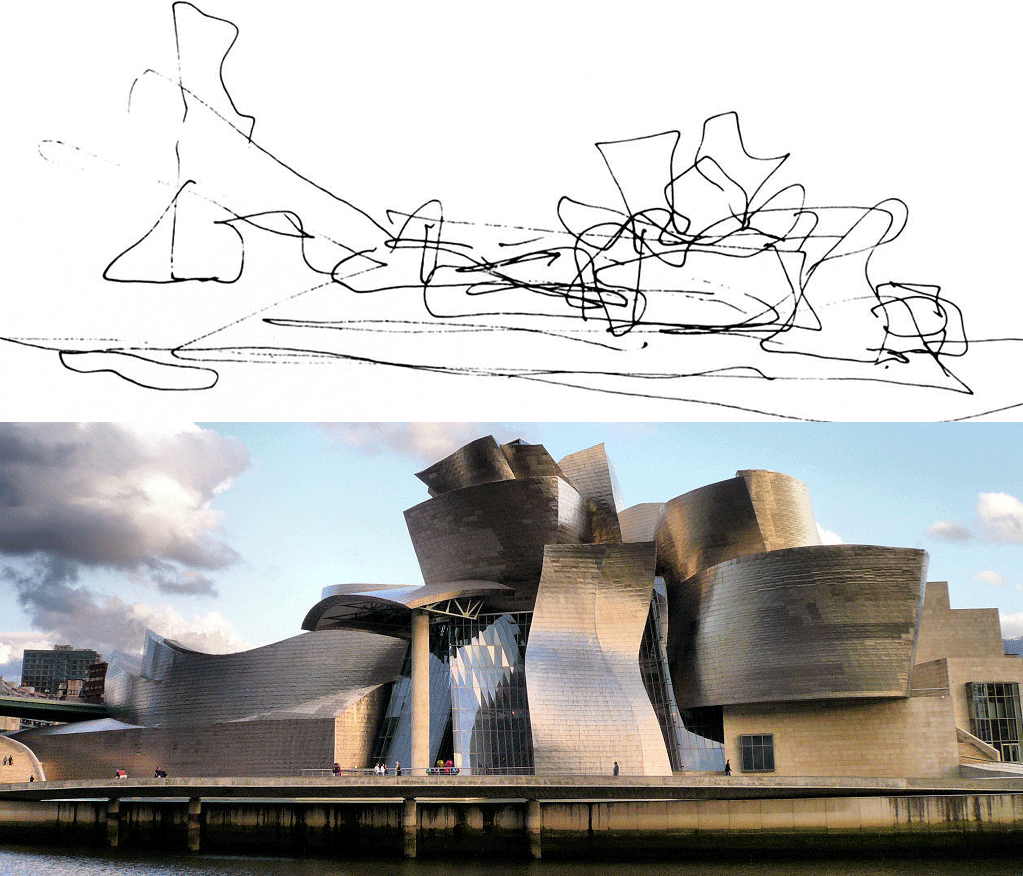
From sketch till the building of Guggenheim Museum, Bilbao, Spain
6. He works more like an artist rather than an architect
The sculpturesque of his designs is Gehry’s identifying characteristic. Curvy forms, prisms, notions of movement, and restlessness are present in each one of his projects. “Innovation can only come from people that are more like artists, and Frank Gehry is the artist who stands above all others in such hierarchy.” (White S., Wright G.P., 2003). Thus, his buildings are works of art, fragile objects that need to survive in an ever-changing urban environment.
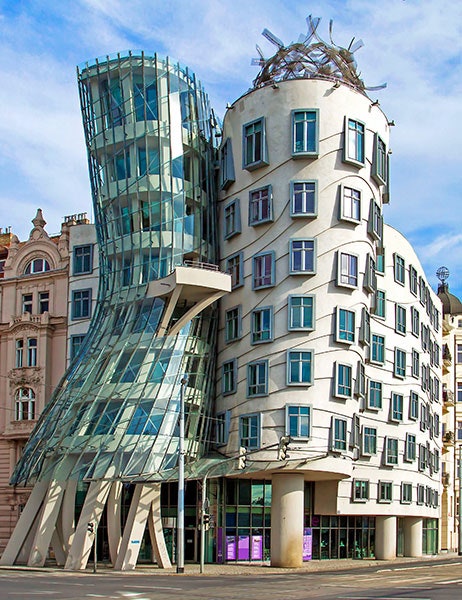
Photo: Aliaksandr Mazurkevich/Alamy
7. He recently designed his first yacht
Gehry is a keen yachtsman and has used the shapes of sails in several projects, such as the Guggenheim Museum in Bilbao and the Fondation Louis Vuitton in Paris. He collaborated in 2008 with the German shipyard German Frers to design Foggy, a boat for Richard Cohen, distinguished for the great undulating patterns of the 86-year-old architect. He had this project in his mind for many years but no time to put it in realization due to workload.

Courtesy of Todd Eberle
8. Frank Gehry once misbehaved in a press conference
When called a starchitect, Gehry is usually irritated, both for the controversial meaning that this word has acquired but also out of modesty; he considers himself just an architect. Two years ago, in a press conference in Oviedo, Spain, a journalist asked him whether he thinks that his architecture is pretentious, a spectacle. Frank Gehry raised his middle finger, and a long silence followed. He claimed that he is only doing his work, and some people appreciate it as it is. Later he apologized, imputing this misbehavior to “a wrong moment.”
9. There will always be things we don’t know about him
Frank Gehry is a unique personality and that reflects in all of his work. He never stops evolving, looking for a new architecture, escaping the ordinary, ignoring typologies and contexts. He bears the mark of the temporary, the ephemeral, (Moneo R., 2004) he is so unpredictable that he never fails to surprise us. He is a rebel after all.
“There are sort of rules about the architectural expression which have to fit into a certain channel. Screw that! It doesn’t mean anything. I am going to do what I do the best and if it’s no good the marketplace will deny it.”—Frank Gehry

